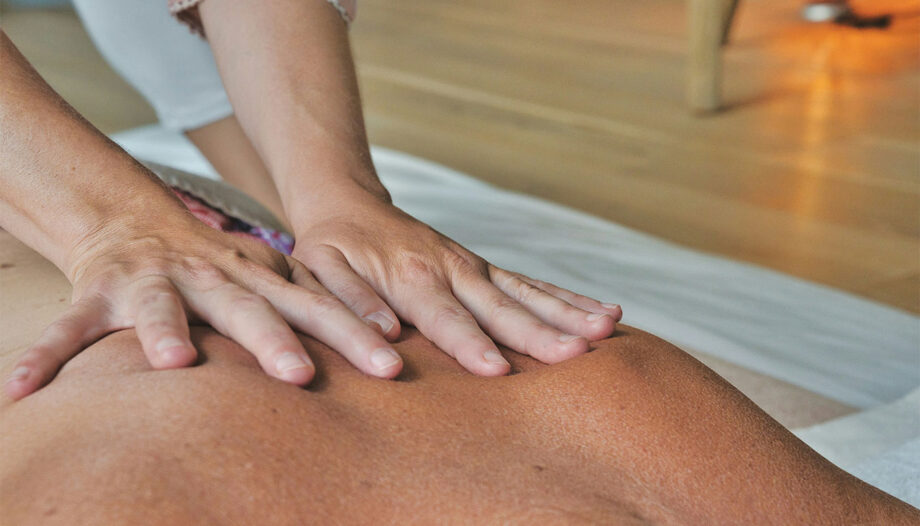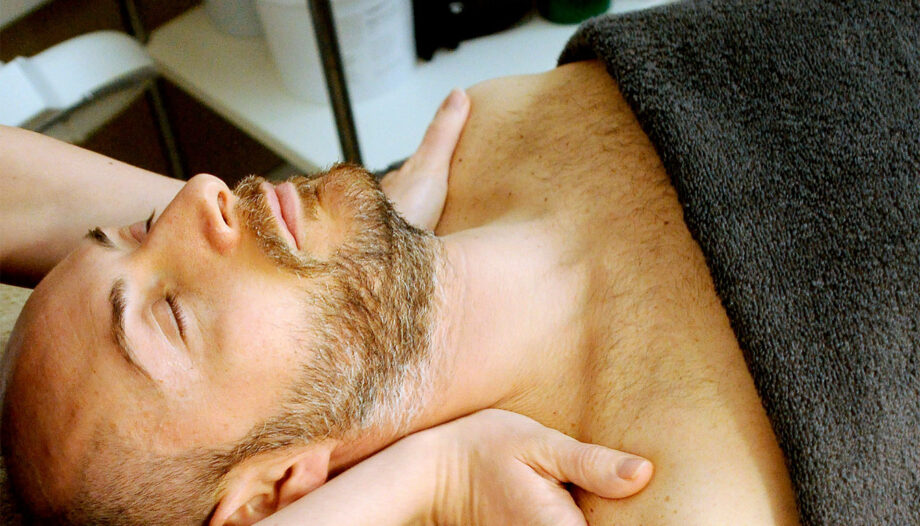Therapeutic massage has gained significant popularity in the UK, with 62% of individuals seeking it for health-related reasons. According to the American Massage Therapy Association, 95% of people believe in its health benefits. This growing interest highlights the importance of understanding the differences between various types of massage therapy.
This article provides an objective comparison between two widely practised techniques: Swedish and deep tissue. Whether you’re looking for pain relief or relaxation, understanding these methods can help you make an informed choice. The NHS also recognises massage as a beneficial treatment for musculoskeletal issues, further emphasising its value.
We’ll explore key aspects such as pressure levels, treatment goals, and recovery timelines. Additionally, we’ll highlight the importance of clear communication with your therapist to achieve optimal results. By the end, you’ll have a clearer understanding of which technique aligns best with your needs.
Key Takeaways
- Therapeutic massage is increasingly popular in the UK for health reasons.
- Swedish and deep tissue techniques serve different purposes.
- Pressure levels and treatment goals vary between the two methods.
- Recovery timelines differ based on the chosen technique.
- Clear communication with your therapist ensures better outcomes.
Introduction to Swedish and Deep Tissue Massage
With its roots in 19th-century Europe, Swedish massage remains a cornerstone of modern therapeutic practices. Often referred to as the “classic massage,” it uses oils or lotions in a full-body approach to promote relaxation and improve circulation. This technique laid the foundation for many other forms of massage therapy, including deep tissue massage.
Deep tissue massage evolved from Swedish principles but focuses on deeper layers of muscle tension and connective tissue. Therapists often use elbows or forearms to apply firmer pressure, targeting specific areas of discomfort. While Swedish sessions typically cover the entire body, deep tissue treatments are more targeted, addressing problem areas like chronic pain or injury recovery.
The NHS has increasingly acknowledged the benefits of massage therapy, particularly for managing chronic pain. A 2019 study by Medical News Today highlighted how Swedish massage can significantly reduce anxiety, making it a popular choice for stress relief. On the other hand, deep tissue massage is widely used in sports medicine, aiding athletes in recovery and enhancing performance.
Essential oils often enhance the experience of Swedish massage, adding a sensory dimension to relaxation. Research from ScienceDirect supports their role in improving mood and reducing stress. Whether you’re seeking relaxation or targeted pain relief, understanding these techniques can help you choose the right approach for your needs.
Key Differences Between Swedish and Deep Tissue Massage
Understanding the nuances between massage techniques can help you choose the right therapy for your needs. While both Swedish massage and deep tissue methods aim to relieve discomfort, their approaches and outcomes differ significantly.
Technique and Pressure
Swedish massage relies on gentle, flowing strokes like effleurage and petrissage. These techniques work on the superficial layers of the skin, promoting relaxation and improving circulation. In contrast, deep tissue therapy uses firmer pressure, often with elbows or forearms, to reach deeper muscle and connective tissue layers.
Pressure levels also vary. Swedish massage typically rates 2-4 out of 10, while deep tissue ranges from 6-8. This difference makes the latter more suitable for addressing chronic tension or injury recovery.
Intended Use and Focus Areas
Swedish massage is ideal for those seeking relaxation or relief from posture-related tension. It’s particularly beneficial for individuals with sedentary lifestyles or computer-related discomfort. Each session spends 5-7 minutes per zone, covering the entire body.
On the other hand, deep tissue therapy focuses on specific problem areas, spending 10-15 minutes per zone. It’s often recommended for athletes or those recovering from injuries. However, it may cause post-session soreness, making it less suitable for the elderly.
For more insights, explore our detailed comparison on Swedish vs deep tissue massage.
Benefits of Swedish Massage
Swedish massage offers a range of health benefits, making it a popular choice for many. Its gentle technique and soothing strokes are designed to promote relaxation and improve overall well-being. Whether you’re dealing with stress or seeking to enhance your physical health, this method has something to offer.
Promotes Relaxation and Reduces Stress
One of the standout benefits of Swedish massage is its ability to reduce stress. A 2016 study showed a 31% decrease in cortisol levels, a hormone linked to stress. This makes it an excellent choice for those looking to unwind and improve their mental health.
Additionally, the relaxation it provides can enhance sleep quality by activating the parasympathetic nervous system. Many find it comparable to meditation in terms of mental health benefits.
Improves Circulation and Lymphatic Drainage
Swedish massage also boosts circulation, which helps deliver oxygen and nutrients to muscles. Enhanced skin perfusion through capillary dilation is another key advantage. This can lead to better recovery and overall health.
It also supports lymphatic drainage, increasing lymph flow in a way similar to light exercise. This helps remove toxins from the body, promoting a healthier immune system.
For office workers, the focus on neck and shoulder areas can alleviate postural tension. Modified techniques even make it safe for pregnancy, offering a versatile solution for various needs.
Benefits of Deep Tissue Massage
Deep tissue massage is renowned for its ability to address persistent discomfort and promote physical well-being. This technique focuses on the deeper layers of muscle and tissues, making it particularly effective for those dealing with long-term issues.
Targets Chronic Pain and Muscle Tension
One of the standout benefits of this therapy is its ability to alleviate chronic pain. A 2014 study showed a 38% faster recovery time for injuries, highlighting its effectiveness. It’s also widely used for managing conditions like fibromyalgia and arthritis.
By applying sustained pressure, therapists can break down scar tissue and reduce muscle tension. This not only relieves discomfort but also improves joint mobility, particularly in areas like knees and shoulders.
Facilitates Healing and Recovery
Deep tissue massage promotes healing by increasing blood flow and reducing inflammation. Athletes often use it to clear lactic acid and speed up recovery after intense workouts.
It’s also beneficial for postural realignment and managing tendonitis. The NHS recommends it for lower back pain, making it a trusted option for many seeking relief. For more details, explore the deep tissue massage benefits.
What Happens During a Swedish Massage?
A Swedish massage session begins with a warm welcome and a detailed consultation to tailor the experience to your needs. Your massage therapist will ask you to complete a form, ensuring they understand your preferences and any areas of concern. This step is crucial for creating a personalised session that maximises relaxation and benefits.
Once ready, you’ll be guided to a private room where you can undress to your comfort level—underwear is optional. A draping protocol is used throughout the session to maintain modesty and ensure you feel at ease. Many UK clinics also offer heated tables, adding an extra layer of comfort.
The session typically follows a full-body sequence, starting with the back, moving to the legs, and then flipping over to work on the arms and neck. Each area receives focused attention, with the back usually taking around 25 minutes, legs 15 minutes, and arms and neck 10 minutes each. This structured approach ensures balanced relaxation and tension relief.
Your therapist will use a variety of techniques, including long, gliding strokes and kneading motions, to promote circulation and ease muscle tension. Aromatherapy options, such as lavender or eucalyptus essential oils, are often available to enhance the sensory experience.
After the session, your therapist will provide aftercare advice, such as staying hydrated and incorporating gentle stretches into your routine. For more details on the techniques used, explore our Swedish massage guide.
What Happens During a Deep Tissue Massage?
Deep tissue massage focuses on relieving chronic tension and promoting recovery. The session begins with a warm-up phase to prepare the muscles for deeper work. This ensures the body is ready to handle the firmer pressure applied later.
Your therapist will start with a pre-massage assessment to identify injury sites or specific areas of discomfort. This step ensures the treatment is tailored to your needs. Gradual pressure increase is a key strategy, allowing your body to adapt without discomfort.
Techniques like elbow or forearm work are often used to reach deeper layers of muscles. These methods require certified therapists to ensure safety and effectiveness. Bolster positioning is also employed to access joints and improve alignment.
Common tools like hot stones may be used to prepare the muscles for deeper work. Breathing techniques are encouraged to help manage any discomfort during the session. Post-session icing protocols are recommended to reduce soreness, which is normal for 24-48 hours.
For chronic issues, a typical course involves 3-6 sessions. This approach ensures long-term relief and recovery. Below is a summary of what to expect during a deep tissue massage:
| Phase | Details |
|---|---|
| Warm-up | Prepares muscles for deeper work |
| Assessment | Identifies injury sites or pain areas |
| Techniques | Elbow/forearm work, bolster positioning |
| Tools | Hot stones for muscle preparation |
| Aftercare | Icing protocols, breathing techniques |
Conclusion: Which Massage Is Better for You?
Choosing the right massage depends on your specific needs. For stress relief and relaxation, Swedish techniques are highly effective, with studies showing success in 78% of cases. On the other hand, deep tissue methods are ideal for addressing chronic pain and aiding injury recovery.
Costs vary slightly, with Swedish sessions typically ranging from £55-75, while deep tissue treatments may cost £65-90. Combining both approaches, such as monthly Swedish sessions with biweekly deep tissue, can offer balanced benefits.
Always verify your therapist’s credentials, ensuring they are registered with the CNHC. Be cautious of red flags in clinics, such as lack of transparency or poor hygiene. In some cases, your GP may recommend therapy through the NHS.
Ultimately, your choice should align with your goals. Whether seeking relaxation or targeted relief, understanding these options ensures a tailored experience.
FAQ
How do the techniques differ between these two therapies?
The techniques vary significantly. One focuses on gentle, flowing strokes to promote relaxation, while the other uses firm pressure to target deeper layers of muscle and connective tissue.
Which therapy is more effective for chronic pain?
For chronic pain, the latter option is often more effective. It works on deeper layers to relieve tension and address long-standing discomfort.
Can these therapies help with stress relief?
Absolutely. Both methods are excellent for stress relief, but the gentler approach is particularly known for its calming effects.
Are there specific areas each therapy focuses on?
Yes, the gentler method typically works on the entire body to improve circulation, while the firmer approach targets specific areas like the lower back or tight muscles.
What should I expect during a session?
During a gentler session, expect soothing strokes and a focus on relaxation. For a firmer session, anticipate deeper pressure to address muscle tension and injuries.
How do these therapies benefit circulation?
The gentler method enhances circulation through rhythmic movements, while the firmer approach improves blood flow by releasing tension in deeper tissues.
Which therapy is better for recovery from injuries?
The firmer method is often recommended for recovery, as it helps heal connective tissue and reduces chronic pain.
Can these therapies be combined?
Yes, many therapists blend techniques to provide a customised experience that offers both relaxation and relief from muscle tension.








